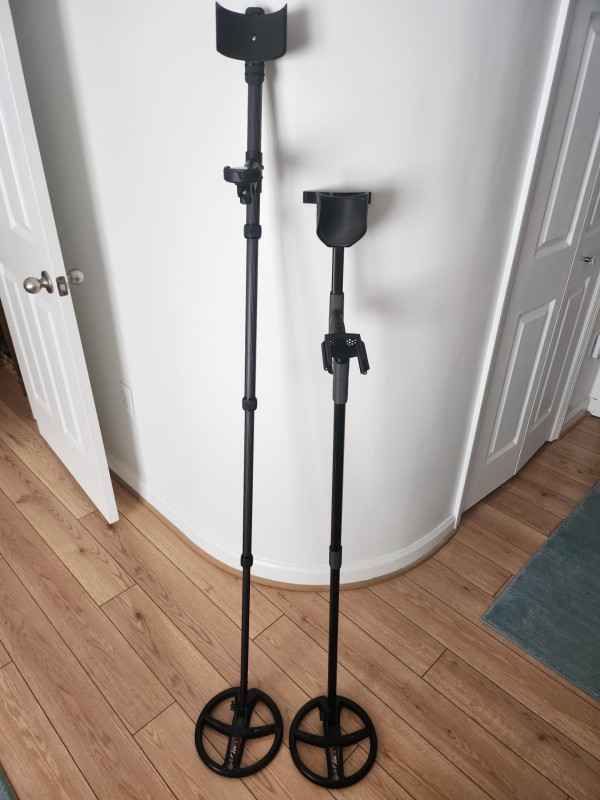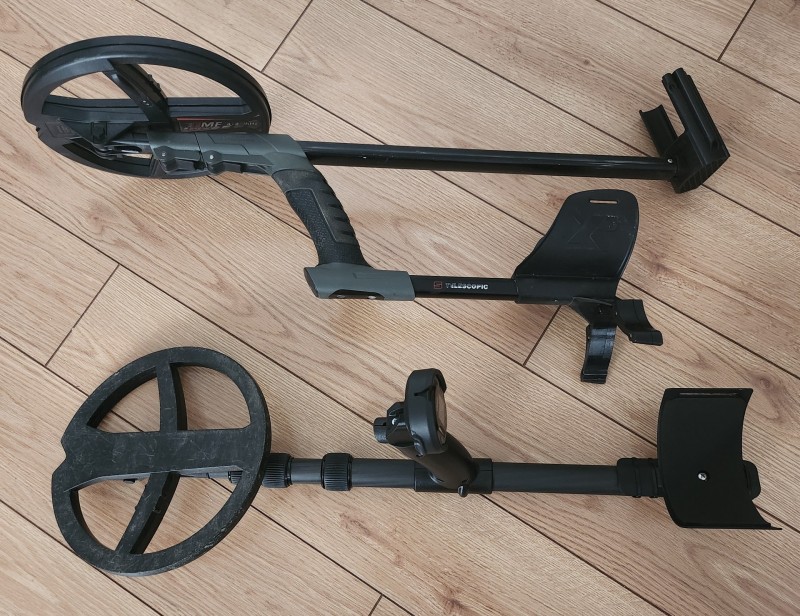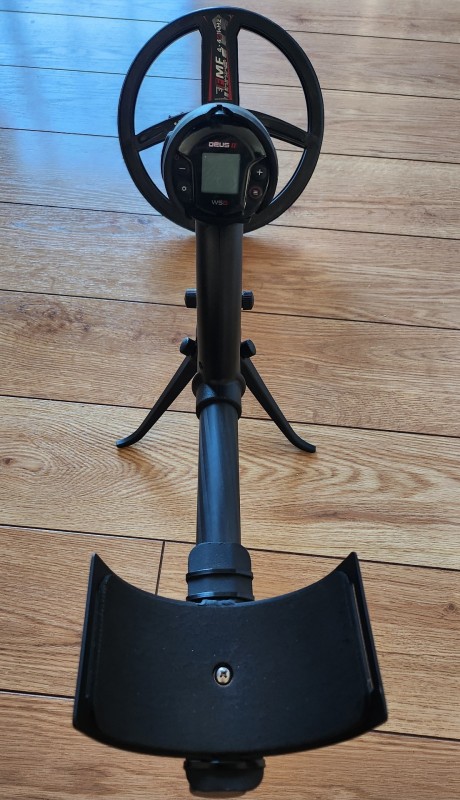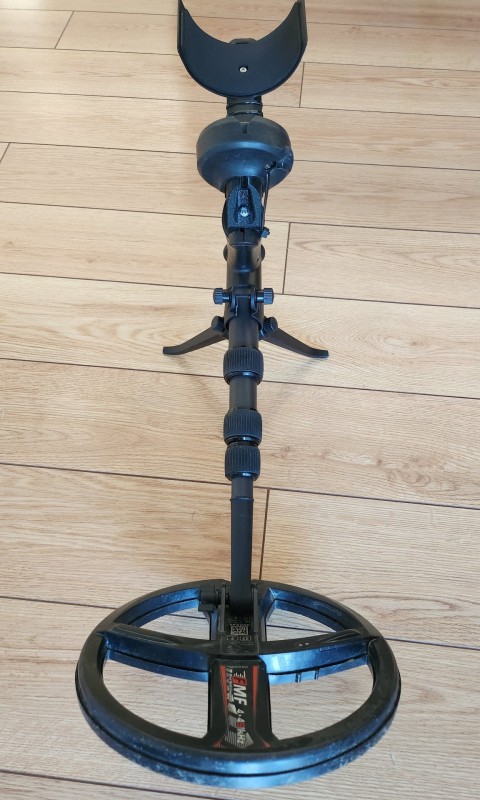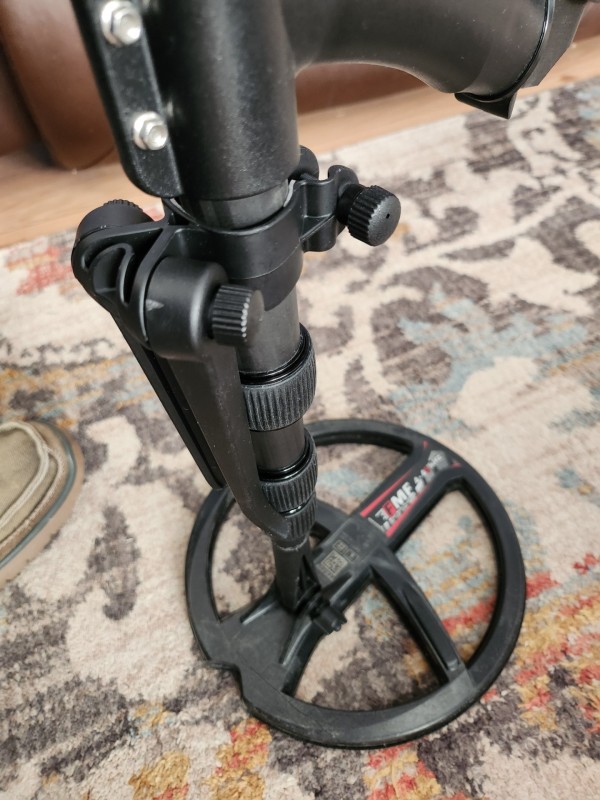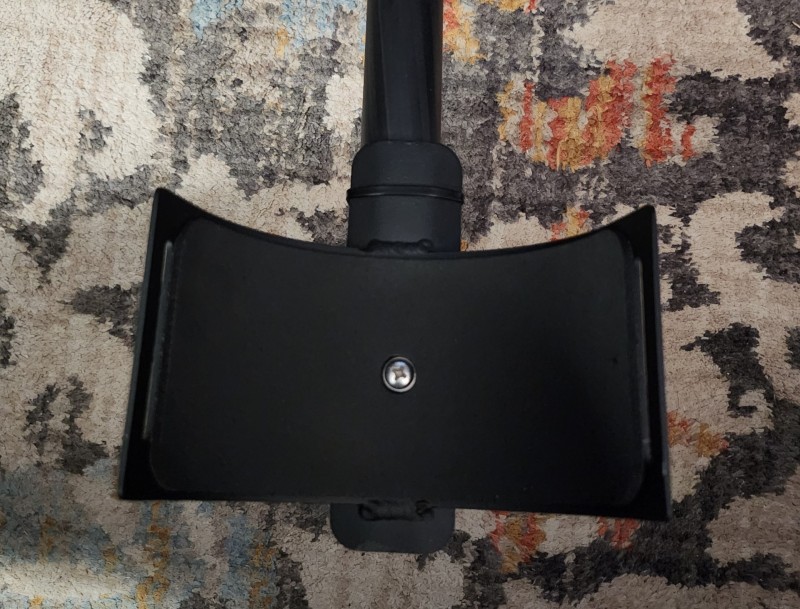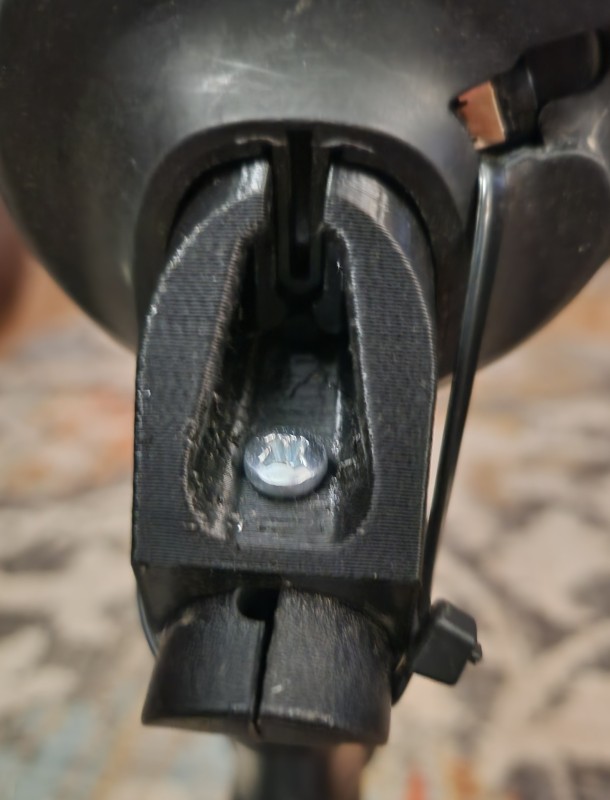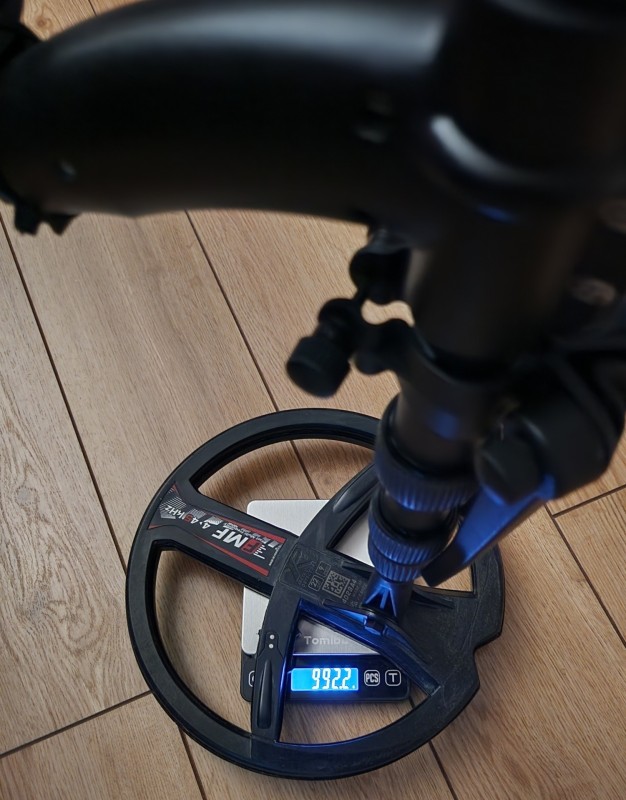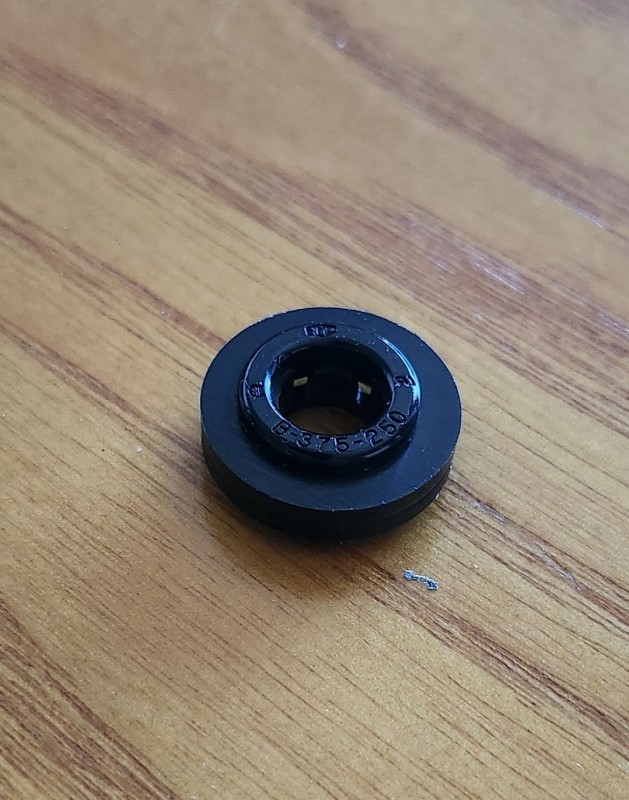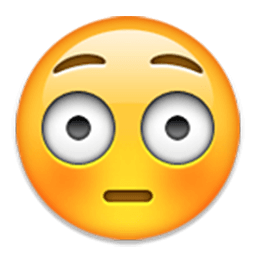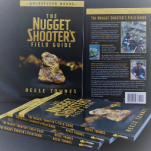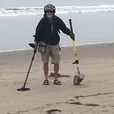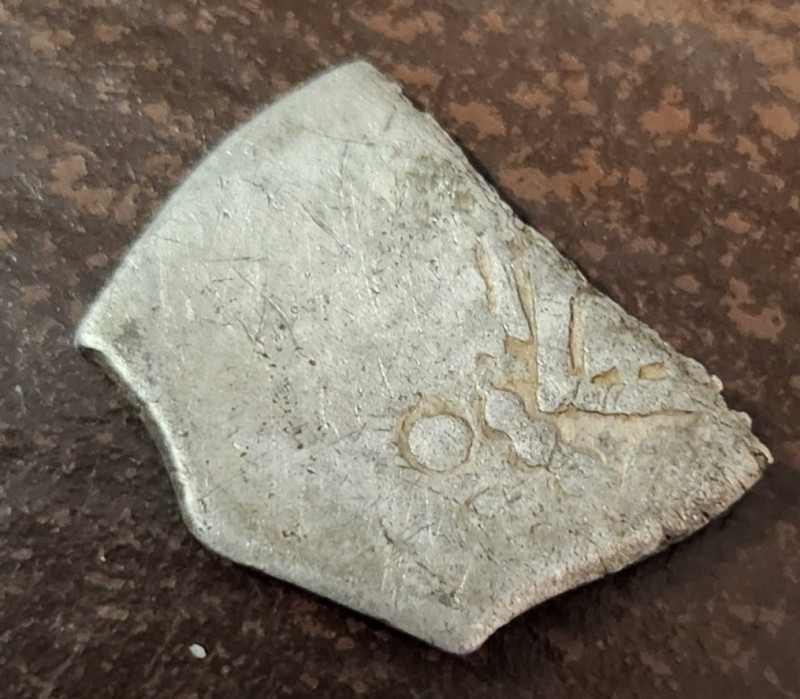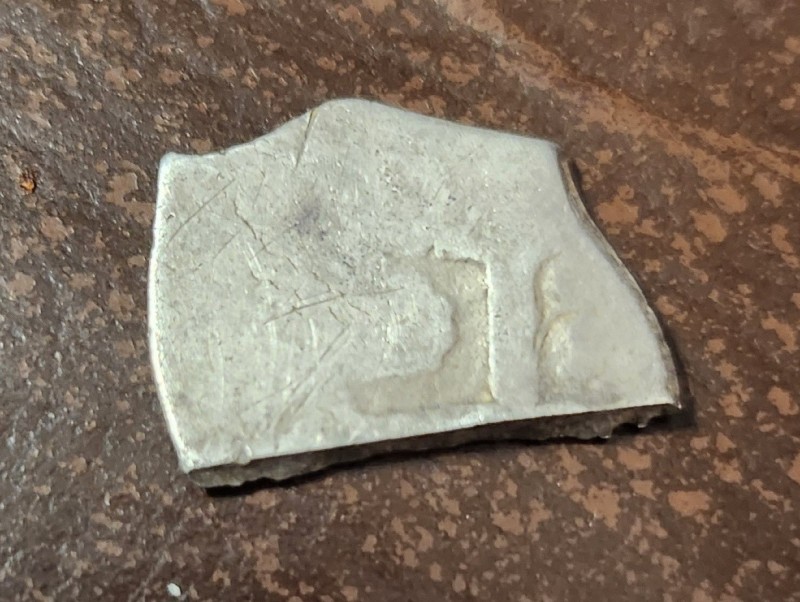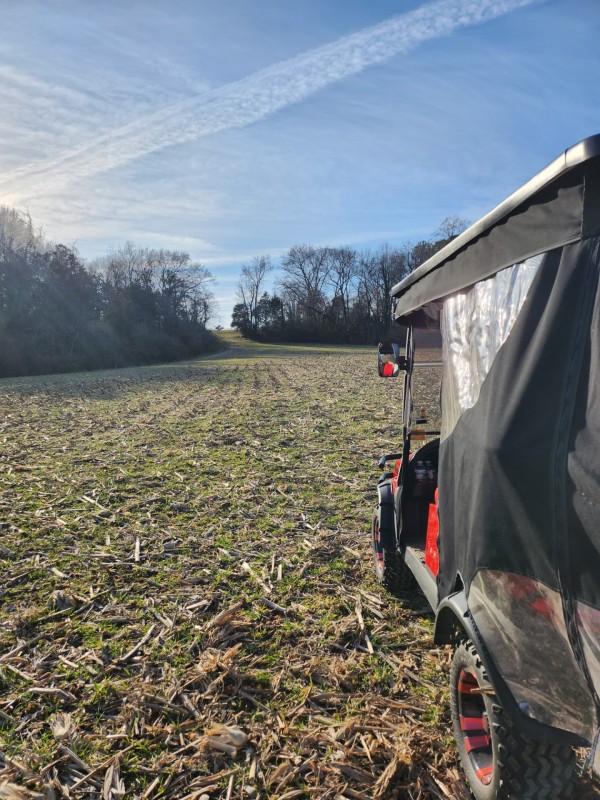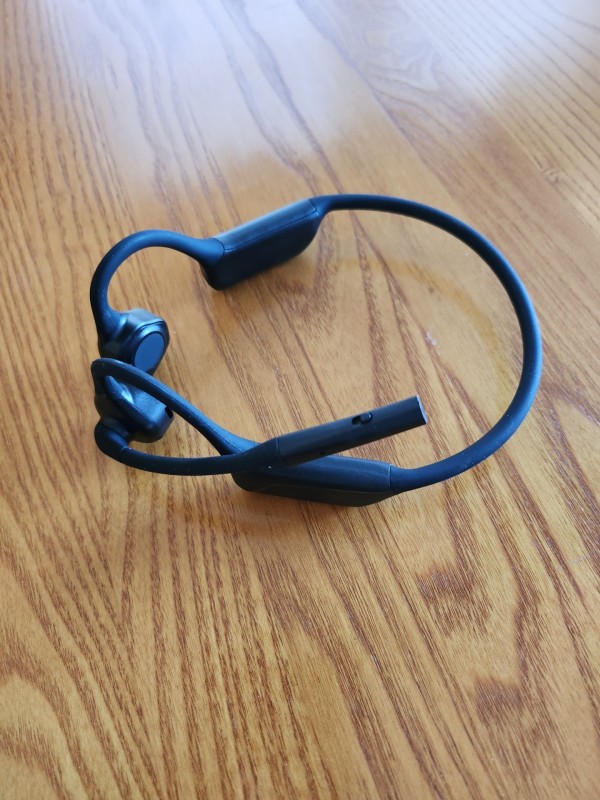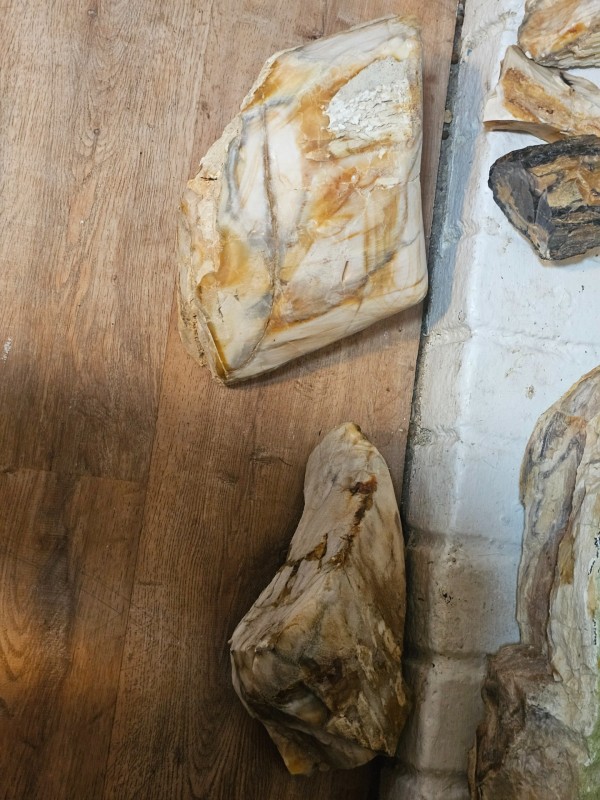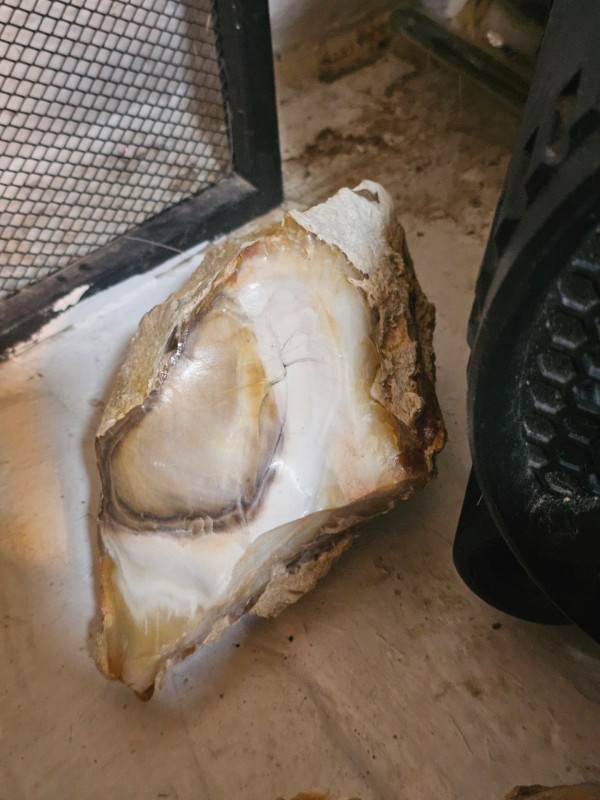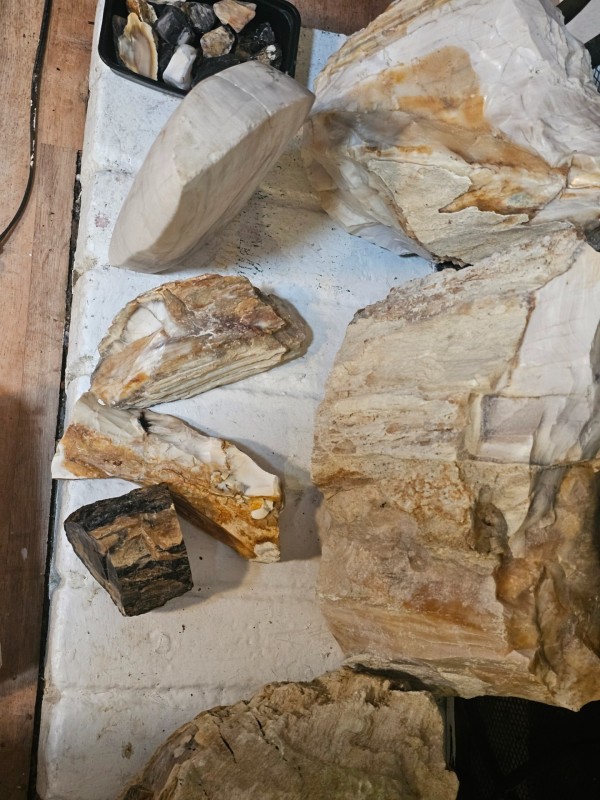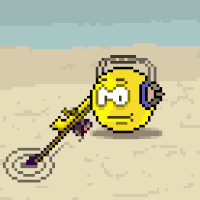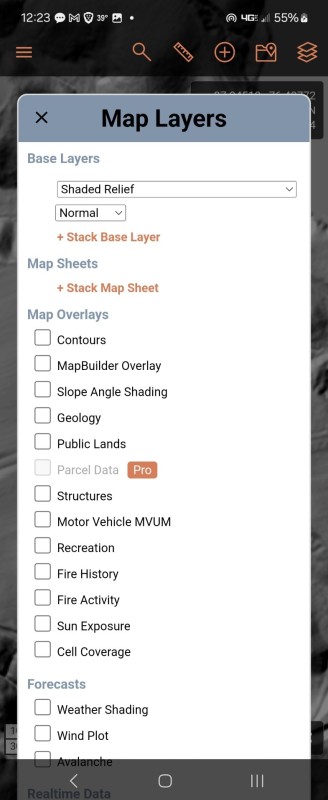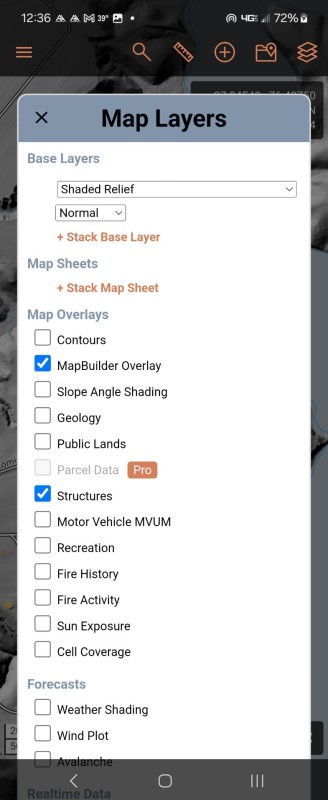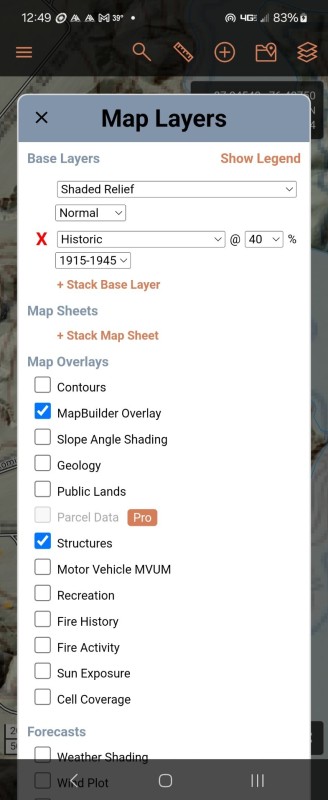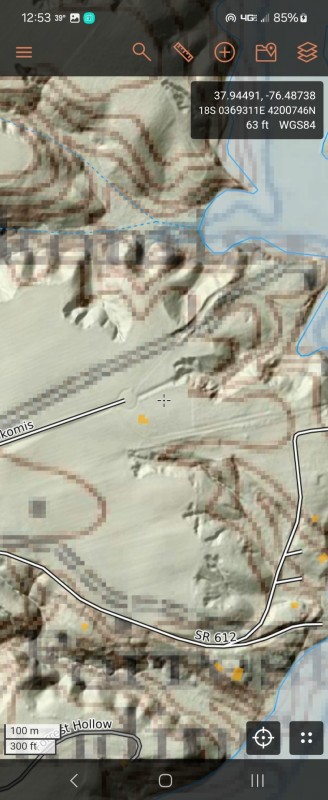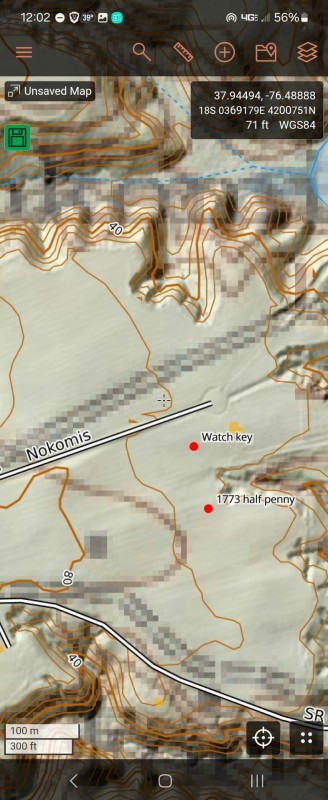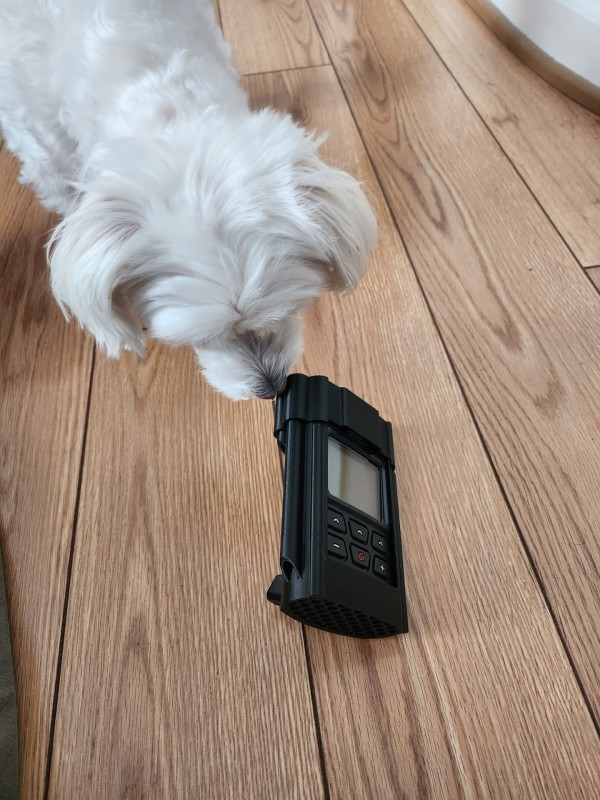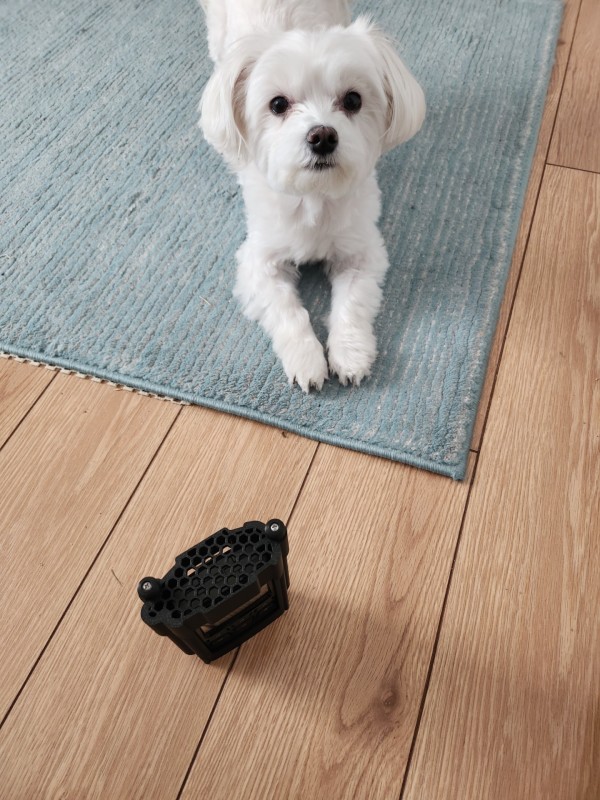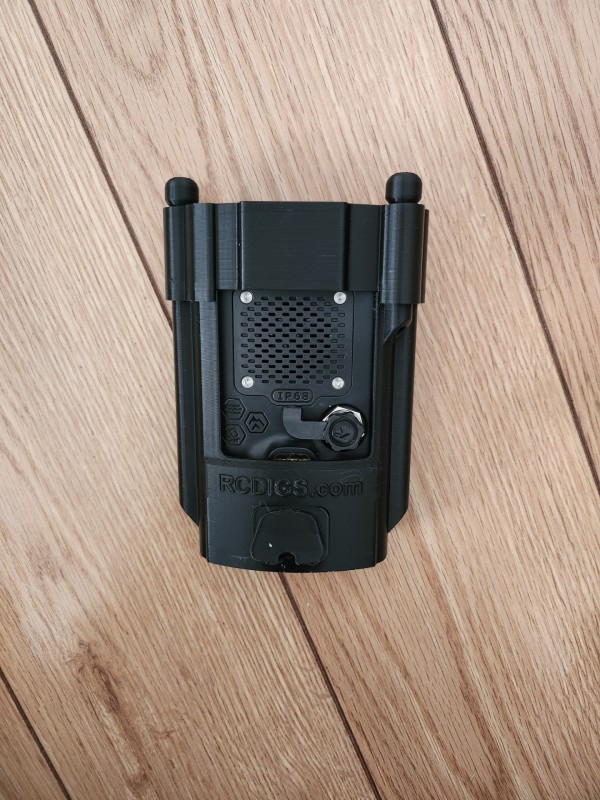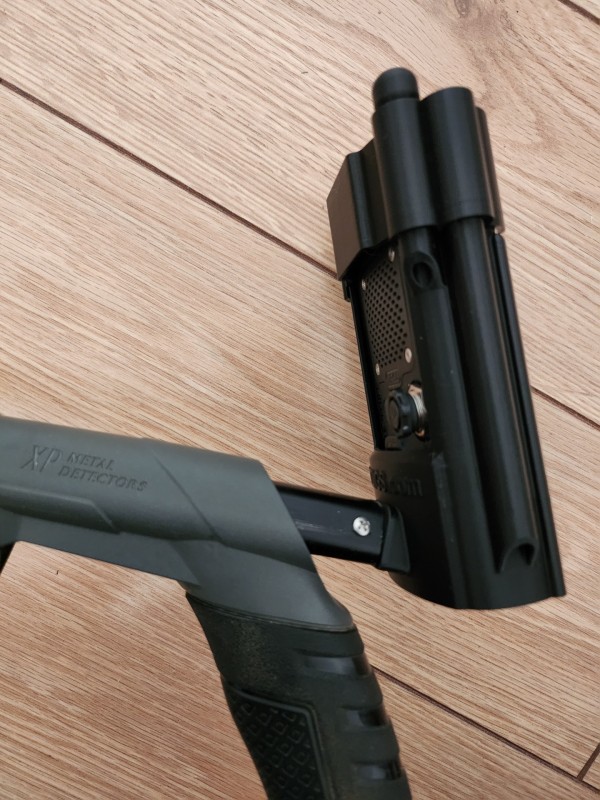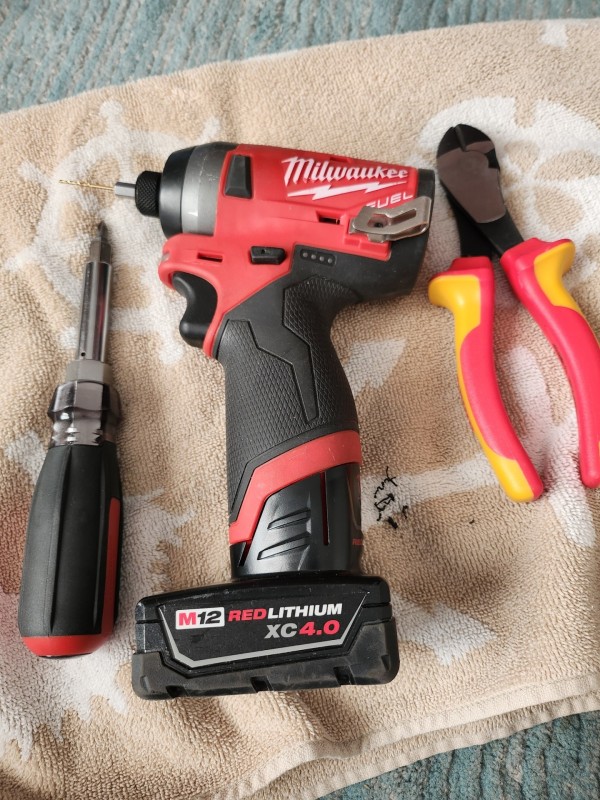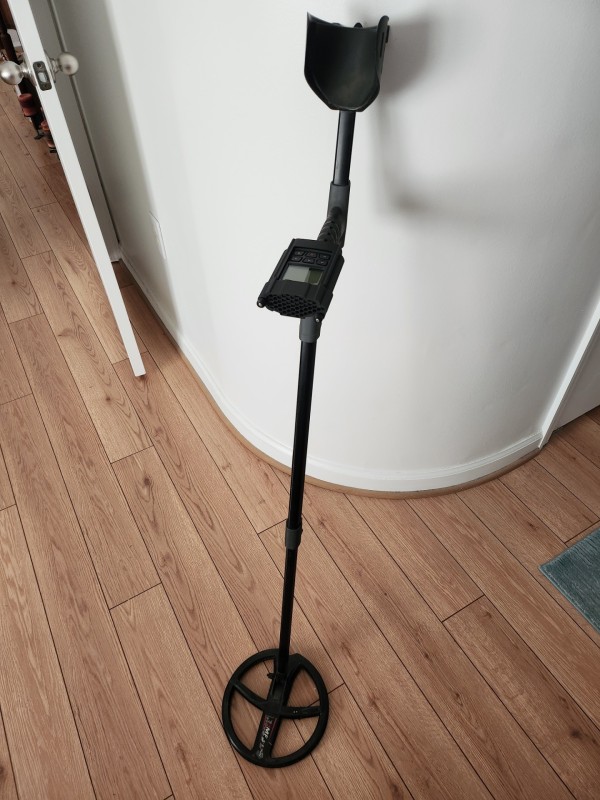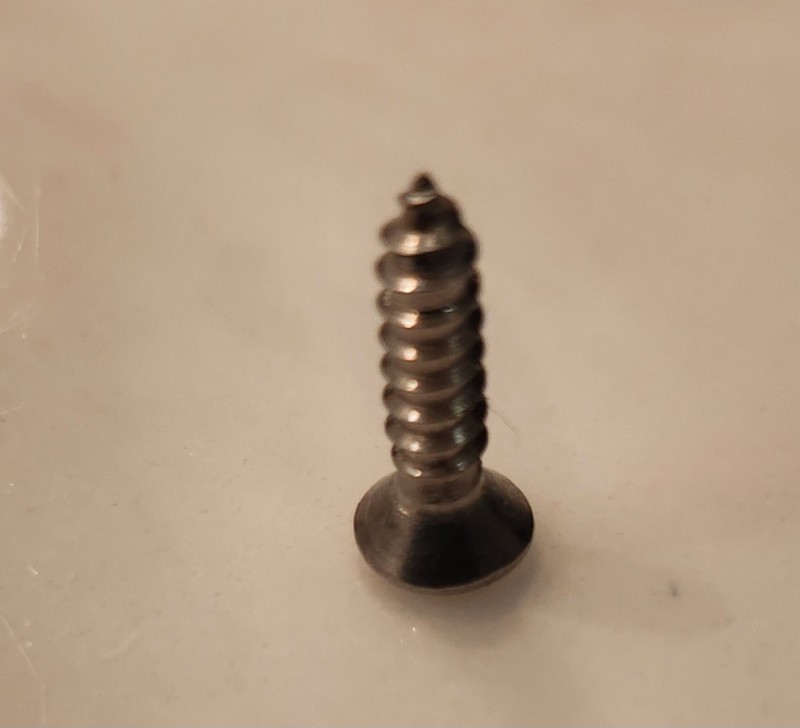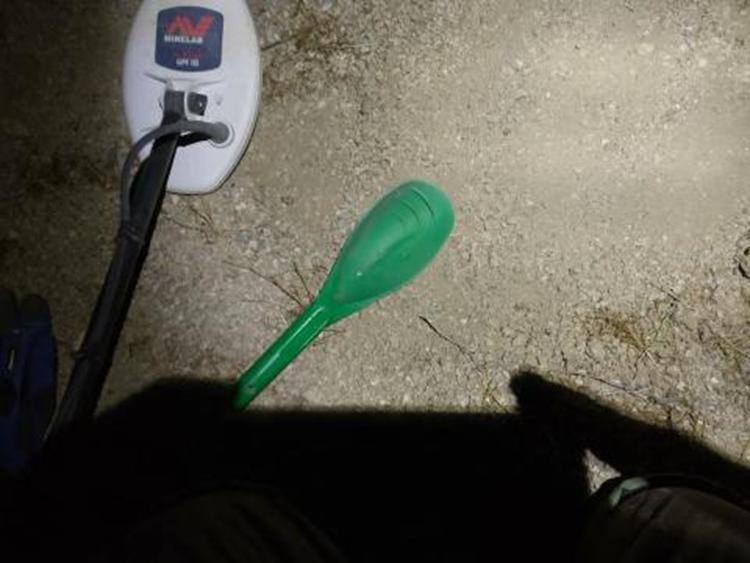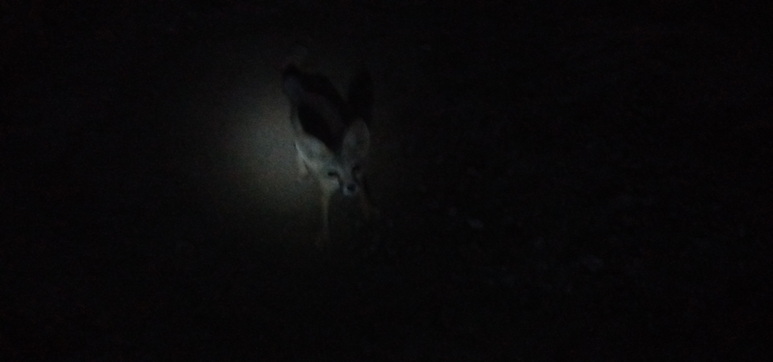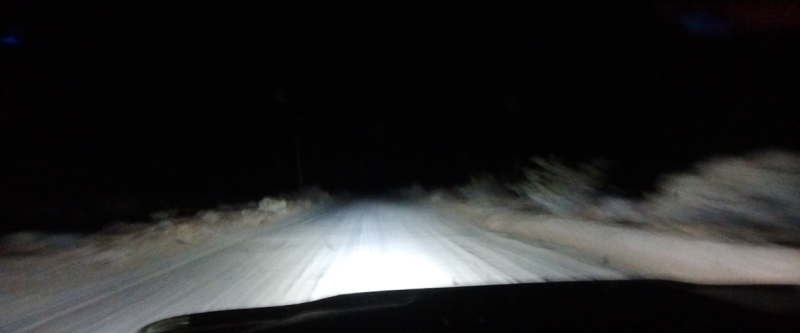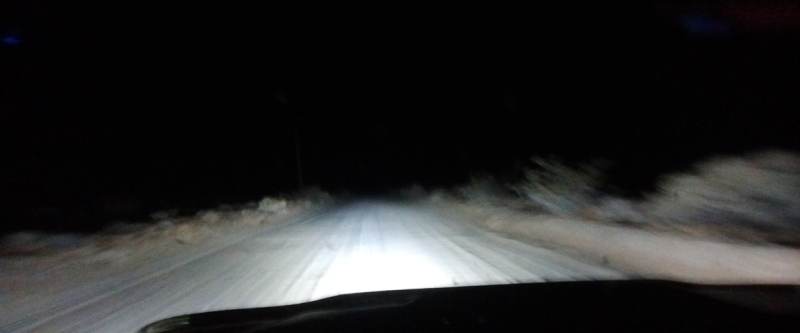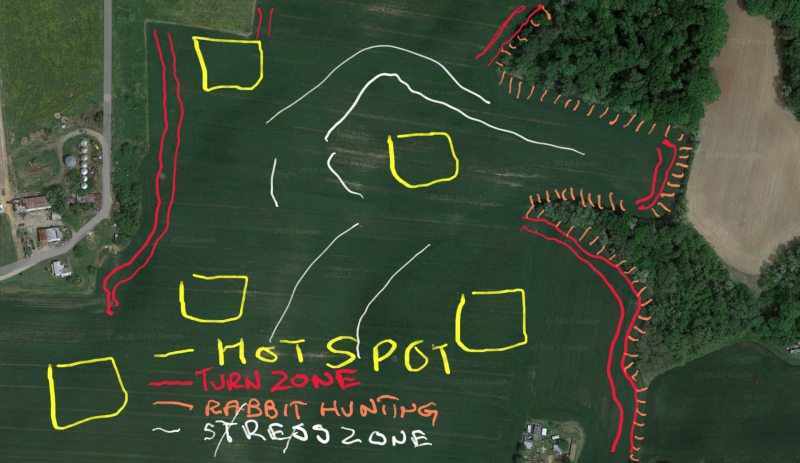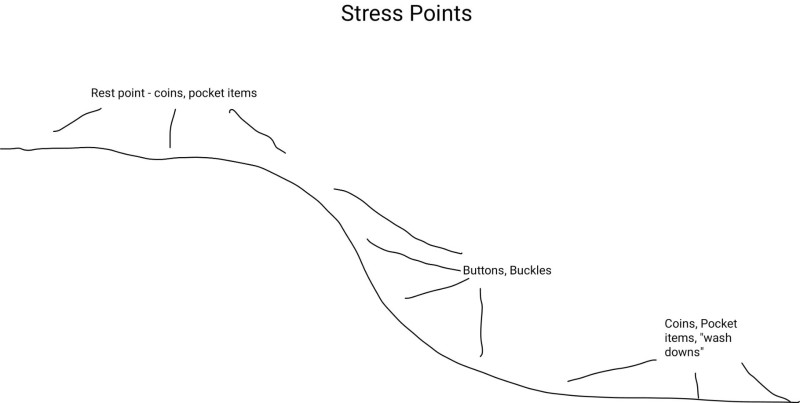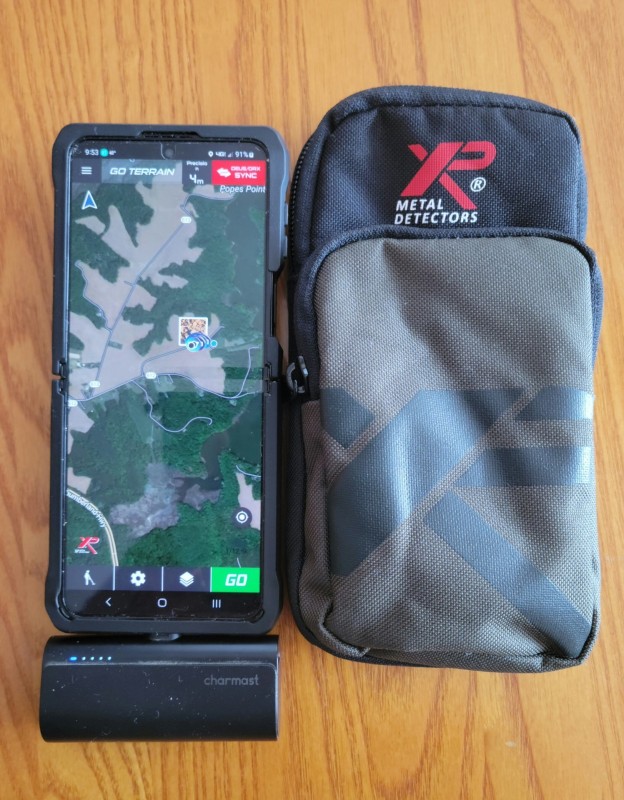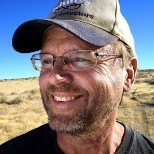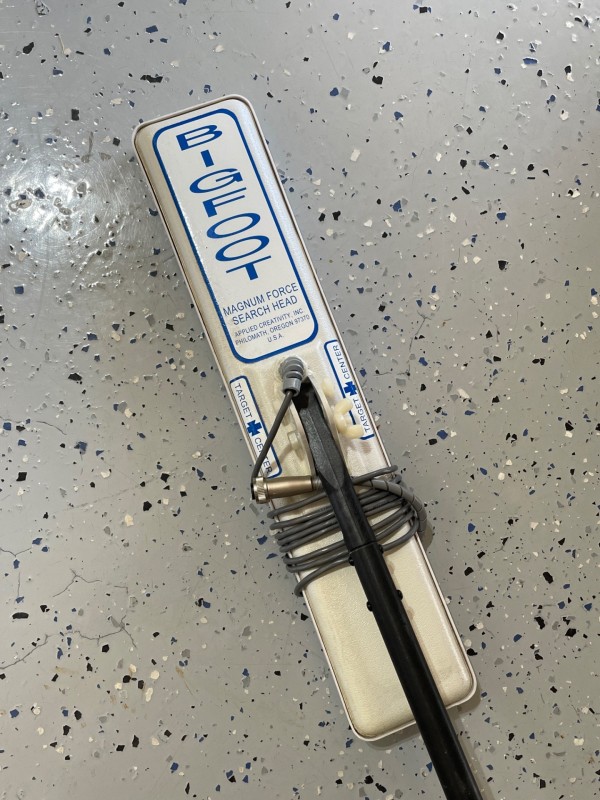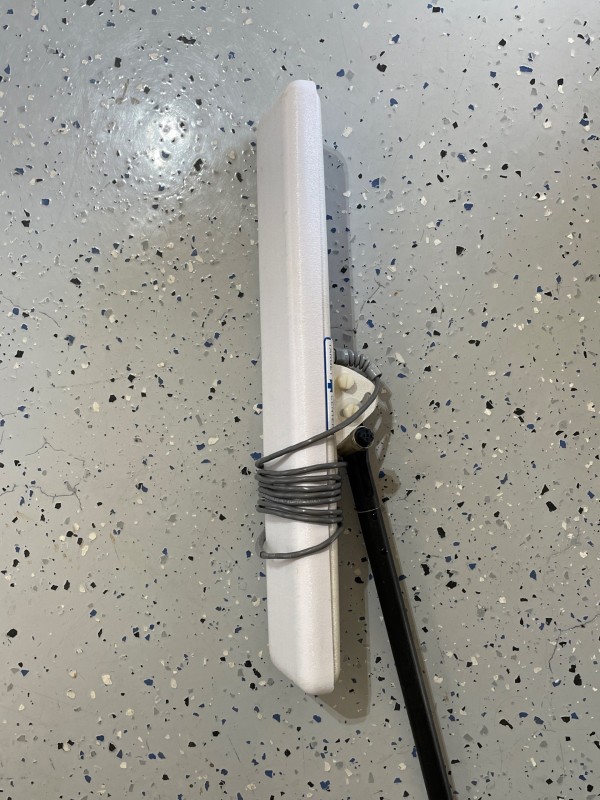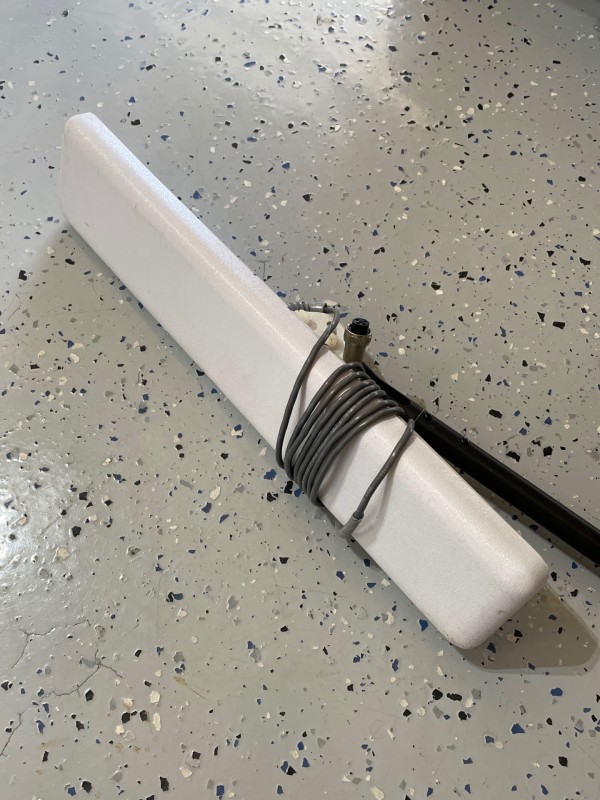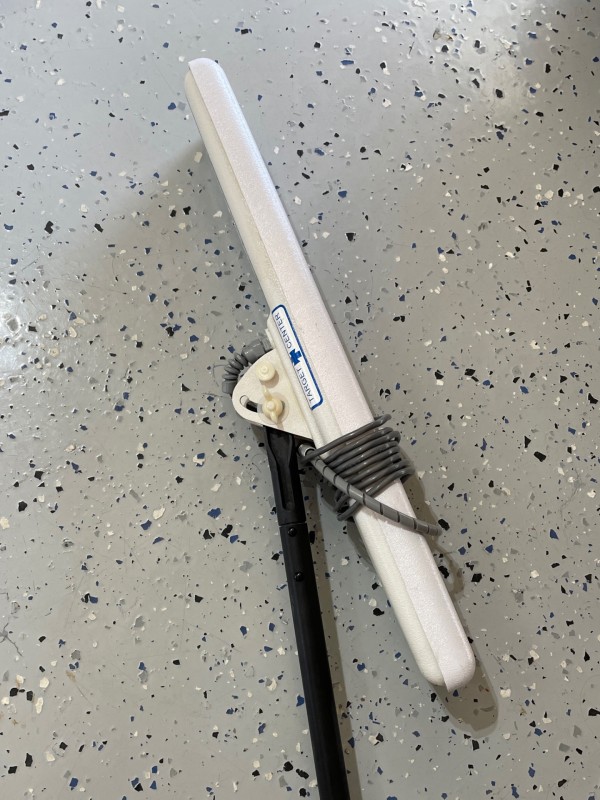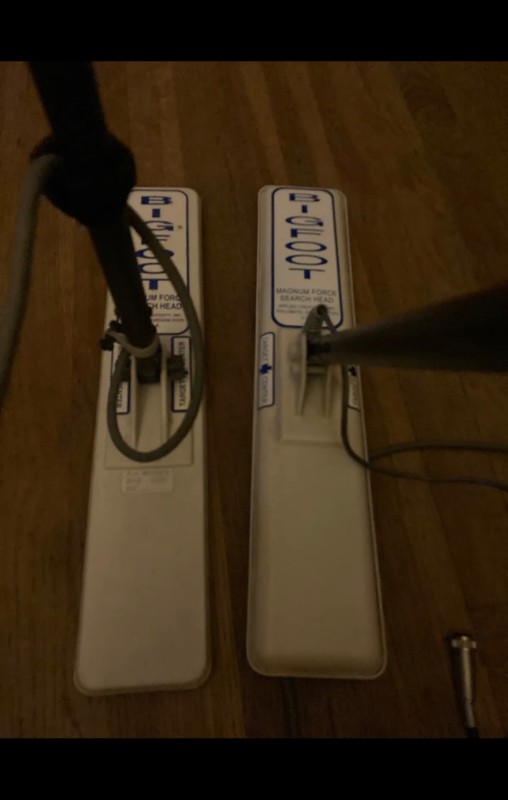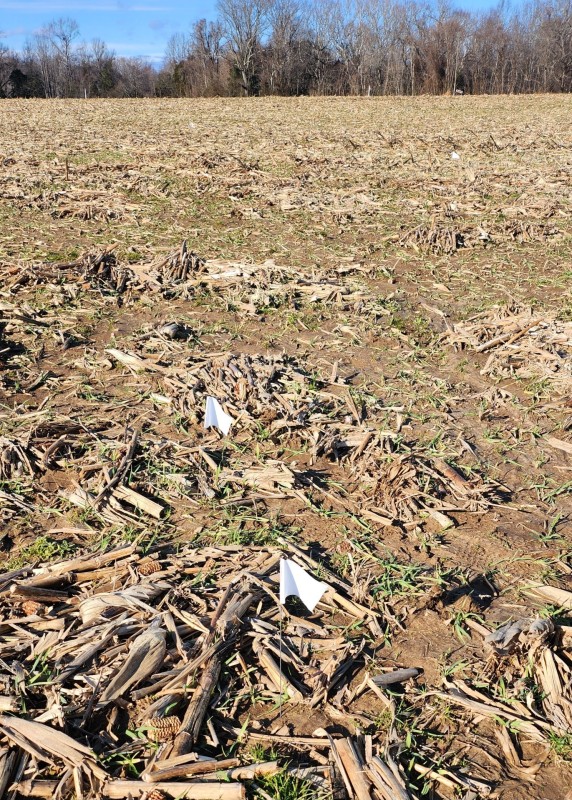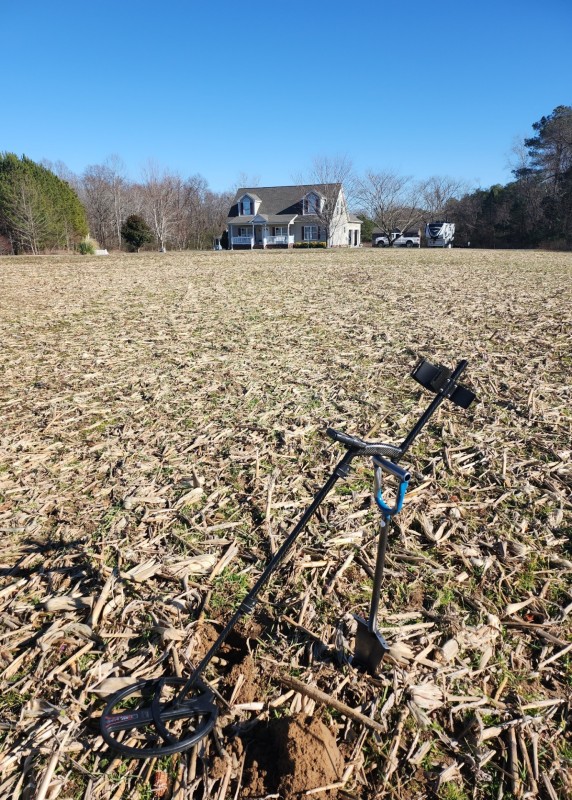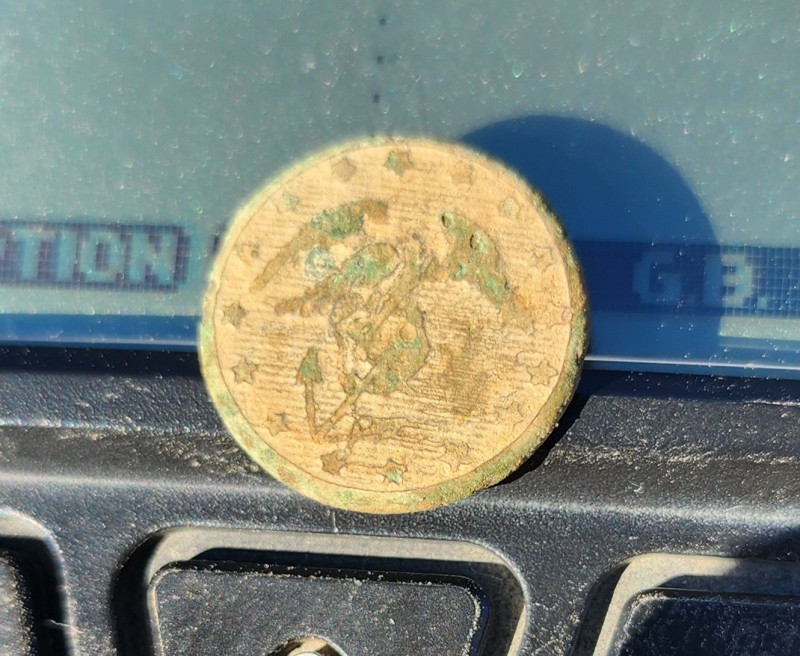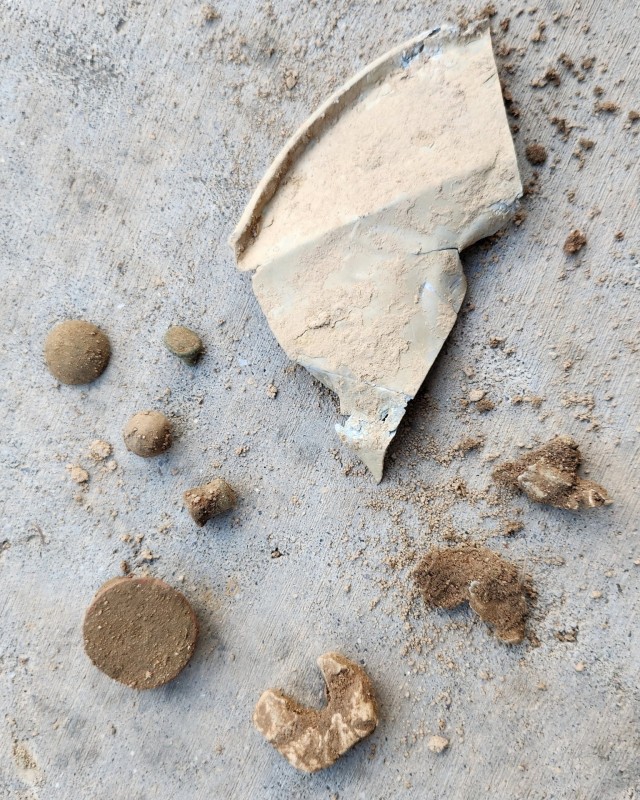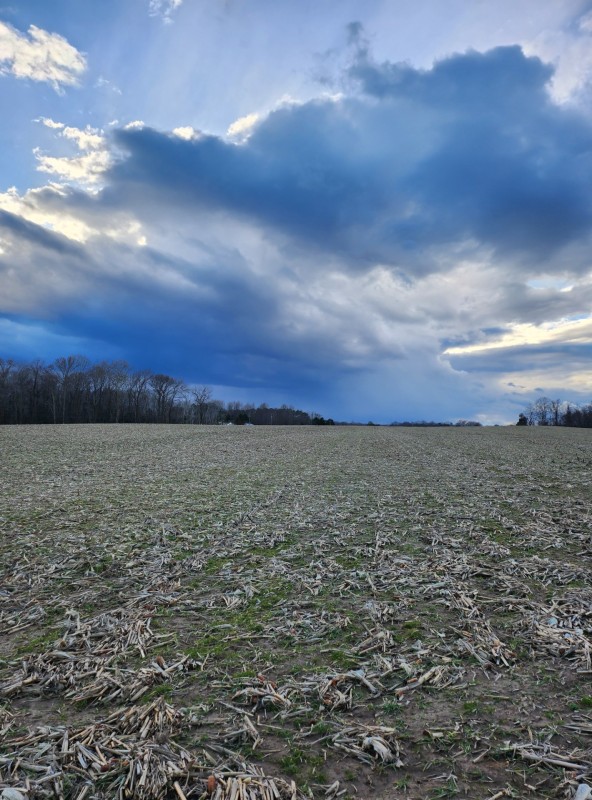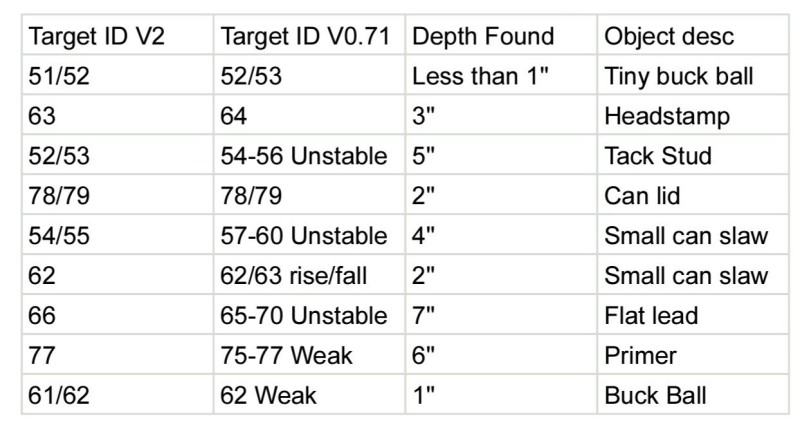Search the Community
Showing results for tags 'advice and tips'.
-
Hello again. I'm hoping that I can get some open and honest insight on a decision I am having a hard time making. And here is it: I have a Minelab GPX 6000 with the 3 ML coils (11", 14", and 17" elliptical). I also have a stock EQ700 that's only been used twice. I have been contemplating getting either the Coiltek Goldhawk 10"x5" coil or the NuggetFinder 12"x7" Xceed coil for the 6000. My thought was initially to trade the 17" elliptical for one of them, but I'm sure there are not many folks out there looking to swing that big old thing all day. OR.. maybe trade my EQ700 for one of those 2 coils. For those of you that have used the 2 coils I'm contemplating, would you guys mind giving me your personal thoughts/opinions/suggestions on what you would do? Should I keep both the 17" coil and the EQ700 and just spend the money on one of the other 2 coils? Or go ahead and sell/trade for one of them? Also, please tell me your thoughts on which of the 2 coils is "best" for the 6000? Thank you in advance to anyone who answers. 😊
-
Well, after almost two weeks out of the water, I just used on the wetsand the M9 for a couple days, leaving the M8 to rest for a little. So this morning I was approaching the deeper waters and after half an hour or so, a crazy noise started out of the blue. No sensitivity detuning or noise cancel or GB or program change worked to keep the machine quiet. Turned off and re-turned on, nothing, same conduct. At a certain point, really tired by all that noise, I managed to change the min. & max. Pitch lower to avoid ears overstress in the depth audio mode and simple profile (the only combination for a neat strong signal). This solved just partially the problem and finally I've been able to hear signals by three SS rings that were in the area. I passed and crossed the tight space in every possible way till silence, but I mean by objects. My Manticore seems to get crazy without a reason and in spite of the longer lower shaft to avoid the rod lock bolt interference or the usual tight cable on the upper part, it remains to understand what is happening. Later I'll carefully dry it out and clean as usual to change the coil and try with the M8. If at that point the noise goes away, I'm maybe the owner of a faulty M9. This is the fourth or fifth session I dive with it... Let's hope for the coil or I'll be forced to ship the Manti to the doctor😑
- 15 replies
-
- 1
-

-
Hello I was wondering what the chances are or if there are meteorites In Southern Illinois because I believe I read on the internet that's her only really in mainly like five states and only 1900 a year found in the US. But I found a picture of one on the internet and what I have to me resembles it but others have told me it's slag I'm not sure so I was just looking for any advice It didn't make a mark on a ceramic tile on the back of it the first picture I'm going to put the meteorite picture off the internet and then I'll put a picture of what I have that I believe looks like it any info is appreciated and then I put a pic of the inside after I cut it open and I've never seen an earth rock look like this thing looks inside and I busted open thousands
-
Finally finished my mini WS-6 Master. First off, I bought a Golden Mask style shaft for it, it came with a steel arm cuff and foot, poorly and unevenly drilled holes for the zinc bolts (all the fitment hardware is zinc ?), and possibly a missing bottom shaft aligner. The shaft is carbon fiber, not the thickest I've seen, but it's fine for me. It has 3 sections which make it the longest detector I own, here it is next to my stock D2 fully extended: Yeah it's that long. You'd probably have to be Shaq or even taller to complain about it. Fully extended it's almost as tall as me (6'1). I could probably use it to search storm drains if they didn't have iron. ? I disliked the arm cuff, so I replaced it with an Anderson cuff for Minelab FBS detectors, it's powder coated aluminum. I used a single stainless bolt as the second hole was drilled improperly, and put 3M Extreme tape on the flange before I tightened it. I have a single zip tie on it to prevent rotation, but it probably won't. Next obstacle was a foot, I bought a Nokta Universal Bipod. Again secured from rotation by 3M Extreme tape. It folds forward and is very light. I secured the WS-6 puck holder to the mount using a single zip tie, it will not fall off. I think I learned that here from one of our other intrepid rural engineers. Gotta replace that zinc screw however, I'm sure it will rust fast. I will probably replace all of the hardware. Completely compressed the detector is a little smaller than my stock D2: I understand now why the 3d section position holder was omitted, it allows the coil to be rotated to the side to put it in a backpack. The biggest obstacle I noticed was the coil yoke, does anyone understand the XP coil securing concept? Xp coils come with a plug of sorts that goes on the wingnut side of the coil. The coils only come with one washer, and the reason for it is simple: XP puts all of the rotation pressure on one coil ear, nearly eliminating ear breakage. The plug fits in a hole on the wingnut side, and pushes the coil against the single washer on the bolt head side. This keeps the bolt straight so it does not break, and puts enough pressure on the coil so it can be made difficult to rotate. I've tested this concept with a Lyman Trigger Pull gauge. The amount of pull on the shaft in order to move it has to be greater than 5 pounds, or the coil will flop. Not so much the 9" but definitely the 11 and 13" coils, which is why you don't want to use two washers - one on each side - to secure the coil. I can pretty much guarantee bolt breakage or flop. This shaft came with two washer/grommets, that equals floppy coil. Most washers are made with EPDM or some other such compound, and they are slippery. Slippery x 2 = floppy coil or bolt bending and breaking. ? I found a solution to this as well, I went to my local Ace Hardware, and bought 2 hard black nylon washers and a press plug to hold them together, inserted it in the wingnut side of the yoke, and used the standard XP bolt and plug to hold it all together. Below is a photo of the assembly, you can see how it pushes the coil left to put pressure on the single washer/grommet, keeping the bolt straight. This can be tightened almost as much as you want without breaking a bolt, I'm getting 8 pounds of pull before the shaft moves, that's really good for people that don't like to spend all day adjusting the coil! ? Yes, I'm crazy. ? I removed two of the zip ties on the cuff, they aren't necessary anymore. The whole thing weighs 992 grams, that's about 2.19 pounds, a little heavier than the stock D2, but smaller and longer, and far more secure to use. The twist locks are aluminum with rubber grips, probably the second best thing to the carbon fiber ? I prefer camlocks. it may not be totally practical but it was a lot of fun figuring all this stuff out! ?
-
Does anyone on here know anything about the laws regarding detecting for gold in the Philippines? I know gold has been found all over the Islands and sits #2 in the world for gold reserves. I would like to know about requirements, permits,where to contact for any Geological/Gold maps or production journals,are you allowed to keep the gold, staking a claim in the Philippines, regions that produced nuggets, etc... I know of one area that produced nuggets and it was placer.
-
After all these years of detecting I'm considering adding gold prospecting to my game. I've never started just because my location did not make it seem like a fruitful thing to do given the beach and parks are always close by. It also hurt because the wife refused to allow me to put a wash plant in the backyard so I could pretend I was a miner. So that being said where to begin? I have my Manticore and Equinox but beyond that I have no clue how to read the ground or tell if something is going to be gold bearing. If you were advising someone just starting out what would the path be? Would you advise them to join and organization like GPAA? Pay someone like Gerry to take you into the goldfields and get a crash course in prospecting or take a more cerebral approach and digest as much of this forum and books as possible? I have time and in no hurry at the moment. The current economy has put a damper on some of my pursuits so funds are not unlimited. I gotta be smart as to how I get going on this and I figured this was the place and the group to ask. I'm located in Ventura County and I know at one time there was gold in our hills but maybe not so much anymore. Thanks in advance! Skate
-
Recently Gary Blackwell put up two videos informing us about a program someone else introduced to him - "Tekkna". It has a whizzy name for sure, and some really odd parameters. Here's the first video: The idea is that it's supposed to help you find small coins in iron infested areas. Let me first mention that no program or set of parameters for the D2 is "magic", although @Rattlehead's "Silver Slayer" was as close as one could get on V0.71 in my opinion. ? That was for coin shooting. Today I went back to continue my grid search of the place I was yesterday, but I quickly found out there was really nothing else, I believe it was a spot that was used a few times for a gathering in the early 1800s, there were oyster shells everywhere and occasional big iron hits, I dug a couple of them and they were all kettle fragments. I then switched to random hunting, located another really trashy spot further away, put the 9" on and tried Tekkna. Purely by coincidence I swung the detector a few times and got an 87 in all the trash, Tekkna really sounds off clear when you have a non-Ferrous target. Between a few odd bits of heavily squelched iron, I dug this: Yet another Spanish coin, #5 this year. ? I believe it to be a Half Reale cob. The reverse is this: Not much to go by other than the cross size, it would be much larger if it were clipped. Cobs are oddly shaped and cut. I searched around for two more hours using this program, made a couple of tweaks to it, first iron volume which I reduced to 8, and then Audio Response which I increased to 5. I also lowered Reactivity to 2 rather than 3 and heard a lot more targets, but from then on the only stuff I got was bits of lead. I also put bottle caps at 3 because the first time I used it here I dug a bottle cap. I might change that to 5 if I get another, it really doesn't mess things up, I've found gold in the beach with it at 5. Here's his second video posted today that gives clear instructions on how to set it up on the WS6: And here, in a nutshell are my notes for setting it up on the RC unit if watching the first video doesn't help: Tekkna Program Based on Sensitive Full Tones Disc 42 95 sensitivity Frequency Max 40 Iron volume 10 Reactivity 3 Audio Response 4 Frequency offset 10 Bottle Caps 0 Notch off Silencer 0 My impression of this program is that it is "interesting", it's not for the 13" coil for sure. You're going to be using it in machine gun iron hoping to squeeze one more target out. ? You don't need the bigger coils grabbing stuff on edge that might overwhelm the center. I lowered iron volume because it really hammers you, 8 is rather comfortable. I raised Audio Response because I wanted targets to jump out slightly more, and lowered Reactivity because I felt I wasn't hearing enough. I don't think the program is really "unmasking" anything, it's just giving you a better chance to find good stuff in the bad stuff. From other tests I've done live in the field I have yet to see any D2 mode "unmask", that seems to be a myth to me. If you're like Gary (I am) and want to feel like you're hearing everything, albeit a whisper until you catch a diggable target, it works rather well for that. It did find a small desirable coin in a bed of crap. Understand though, my area of the country has a lot of Spanish silver, you're not gonna just go out and have it appear. ? I'm pretty sure the UK is a lot different than my mild soil here in Virginia, but Tekkna might be another tool to add. I did not dig any iron, and had no instance where I might have. Check it out. I'll be testing it a lot more very soon, and will update this with any other observations I make. GL, HH ?
-
Although there used to be quite stringent rules for dealers on selling instruments and accessories outside the allocation area, lately it is possible to find several detectors of any brand on Amazon or eBay and buy them from another country. Having just sold a coil of my old Deus2, the new owner does not know what to do in case of service. Since the coil came from France, is it possible to get service from a dealer in another country? Should one send it to the dealer who first made the sale to initiate the service procedure? Thank you to anyone with information on this matter....
-
Been a long time since I posted anything here, I love my Equinox 600 but haven't had anything interesting happen lately until today. I was going through Amazon deals and came across this: https://www.amazon.com/gp/aw/d/B0C6LWNNF6 They're light, extremely comfortable, and inexpensive at the moment. They have a microphone but you can swing it out of the way. It isn't removable. They paired with the APTX-LL B+ sign on the Nox right out of the box, I did a factory reset to wipe out the previous headphones I was using, and then pushed the Wi-Fi/Bluetooth button, waited for the Wi-Fi icon to disappear. Then I turned on the headphones and hung them on the detector and walked away. When I came back they were paired. ? They're not all that loud even with the detector at full volume and the bone phones at full, but the point is they work, for a minimum investment of $49. I generally hunt fields so the volume isn't much of a problem, YMMV. Good luck, and happy hunting!
-
It was taken from a construction site where they were digging with the backhoe and they pulled a bunch of this out. Anyone know where I can sell it or anyone interested in buying some of it.
-
I chase the old gold pocket prospectors who worked out the pockets long ago. What they missed were cleanup during the 1930’s depression. Over the last 170 years the ground has been worked hard by ground sluicing and fires. The hillsides are steep, rocky and thick in brush, vines and canyon oak. The lower elevation red soils favor buckbrush with the east belt soils favoring manzanita. Over the years I have come up with a method for picking up the old timers leftovers that requires crawling under and through these hillside thickets. I have patch-worked together a couple of VLF detectors and I have a good PI detector for the hot ground. What I looking for is a rugged waterproof wireless multi frequency (either in the coil or controller) VLF detector with a 9x5 enclosed Double D coil, an adjustable 150 ohm wireless headphones with one ear cup and a telescoping shaft. In a full multi frequency and individual range of 14, 20, 30, 40, 45, 50 kHz with adjustable polyphonic 5 tones. A modified the Equinox 800 costs to over $1200, the XP ORX is too limited and along with the Deus untested on these California soil types. I have had luck with the Makro Gold Racer but it is limited to 56 kHz & I hate the tones. The Minelab 705 has been a good fit but is dated and limited to 3, 7.5 and 18.75 kHz. The Nokta Makro Legend may be a fit along with the XP Deus II. However far and few between when I get to the top or discover a long hidden camp I scan for coins. Any recommendations based on real gold prospecting experience on mineralized ground?
-
Haven't been getting out much lately, we had a lot of rain and now a cold snap, so I'm fiddling around with stuff at home between the Honeydews. When I go out detecting, I always take my wedding band off because It gets detected by my pinpointer when I'm searching for stuff in my hand. This got me to thinking, which I probably do too much of ? but I always feel a bit uncomfortable removing my wedding band, it's a sign of infidelity or deception to some. I also know of people that can't wear conductive or allergenic metal rings, and others that check their pinpointer with their ring. Some may just not care too, but this is for those that do. I've always said that to get the most out of detecting or the most detecting possible, you have to make some concessions with family or you're going down a deep, dark rabbit hole. I searched around for non-detectable rings and came across Ceramic Rings. They are made of Titanium Carbide, which seems to be a plentiful and cheap material, surprisingly not detectable by any of my detectors or pinpointers. Ceramic is also is lighter than and as strong as Tungsten Carbide, and may not shatter as readily. Ceramic Rings come in black, white, and some fluffy colors for the ladies if they want to be fluffy ?. They can't be made to have a silver or gold color like Tungsten Carbide can. They can also be combined with other non detectable materials and be quite attractive. This makes them more expensive, up to about $400. Stones like diamonds or others cannot installed without metal so that's out. My wife asked me If I wanted one for Valentine's Day when I showed them to her, so she had this one etched with "Happy hunting", and paid all of $60 for it. Since then I've found you can get one for as little as $10 with no etching that is just as good as this one. They're light, comfortable, non-allergenic, and don't scratch like Tungsten Carbide. They're also cheap, so if you lose it and can't find it (certainly not with a metal detector ?), it's better than losing your original band. I think my wife got a kick out of my doing this, it certainly seems that way. I got her some 14k ruby heart earrings to match a ring I found for her this year. Y'all know the saying.
-
Well it’s here and probably here to stay so people need to understand and live with its abilities. Not only is AI great at programming and writing, it has become advanced enough to find locations by matching landscape photos that people post online to Google Earth images and others, and with fairly good accuracy. This does not depend on the GPS tag location information that is also stored on your smartphone photos, it is actually an image search and analysis of the horizon features shown in the photo that it is doing. I am into Geography and GIS, and use a publicly available locating program to help with my wife’s historical archaeology work to find locations where old photos were taken (it only works if there hasn’t been too much development of the area in the meantime) and it has been fairly accurate. Anyways, just a heads up if you like to post landscape photos online but also want to keep your locations safe, as it is no longer just those people who are familiar with an area that can recognize where your landscape photos were taken, AI can now do it for for anyone almost as well as long as there’s a horizon shown with some features in the skyline (mountains and valleys and other unique items in the skyline).
-
Ok y'all, Chase brought my attention to this FREE app a while back that almost does it all, navigation, Topographic maps, tracks, markers for finds, pretty much everything, and they just added USGS Lidar maps. You can pay for the pro version but the free one is crazy good until it isn't. ? It's an app called CalTopo, for both iPhone and Android. I only use Android so there may be differences, but it's pretty full featured, you can't save photos of finds yet but you can mark them and label them. What Chase and I want to do is walk old roads on Topographic maps especially, find disturbed patches and the like. If we had cellar holes where I am, that would be great too, but almost none here. Let's get to it, download the app, open it and go to the icon that looks like stacked paper. I select "shaded relief" which is the USGS Lidar mapping they just added. It shows disturbed ground, cellar holes and most ground relief, it "sees through" trees. Next I select "MapBuilder Overlay" and "Structures" to see current roads and current structures. You can also select "Contours" and whatever level you want for the latest erosion, might be helpful. I use 10 feet. I'm showing you where I live, but if you decide to detect anywhere locally to me you'll receive a visit from my local Sheriff's department, or worse. ? ? Here's where it gets really interesting as if Lidar wasn't enough, you can overlay old Topographic maps: Select "Stack Base Layer", and pick "Historic" near the bottom of the list. Set the transparency percent to 40% or whatever your preference is, you may have to switch between the years to get one that actually displays, and BAM. Now you can see old roads and old structures! We're not done, you can mark positions of finds, and eventually see patterns: "Long press" the screen at the location, and you can add a label and description. I save ID numbers in the description. OR you can hit the "four dots" icon on the bottom and select "marker at GPS location". It will also save tracks like OnX Hunt and Go Terrain. I haven't tried that yet, but if it doesn't keep them you can run OnX as well. See the black rectangle? That's the location of an old farmhouse that is long gone. The roads are "fairly" accurate. Old maps weren't in the same scale often, so it's not perfect, but... Wow. There are a lot of things you can do with this app, but the more overlays you add the slower it will be. GL, HH. ?
-
I've seen other reviews here (I think) about the RCDIGS remote holder for the Deus 2. Here's my pup Sammy Hagar (?) checking it out after I test fit the RC. It comes in left hand or right hand tilt, or straight. This is the straight one. You'll have to wait a month for my birthday to see the right hand tilt. ? I've got a couple different kinds of locking mounts for the RC, looked for something immediately after seeing the lanyard and having the RC pop out of the mount. ? I have found the more serious mounts wear out after the beating I give them. This one looks like a beast. Initial impression is this manufacturer must have a heck of a printer, and knows how to make something tough. Lots of backfill and great material. Stainless and brass hardware, it almost feels like a precision instrument. Unlike other printed stuff it has a less raw feel, no really sharp edges. It comes well packaged with a piece of paper that has a QR code with a link to his assembly video, watch the video before you do anything. He will tell you some stuff you should know so you don't trash the mount. The manufacturer doesn't tell you one important thing in the video however - that you should have a 1/16th inch drill bit available and probably get some 1/8" stainless countersink screws that are 1/4" long. This is what I used: The screws are not included but he does mention that he doesn't use the stock mount screws, which in a few words (mine) are absolutely ridiculous crap that will break and wear out fast, not to mention they are too thin. A few times unscrewing them will wear them out. Rant over. ? You don't need the electrical cutters, I used them to cut the zip ties for the waveguide off my 9" coil. ? This is what it will look like when you're done, the countersink screws will not interfere. Took the rig out today, you'll notice (or not) when you put this together the RC is a little loose in the mount, it's probably better it is because it will probably break if it was hard to put in. I considered adding some foam or a rubber washer to tighten it in, but after a long field test today I'd say it's not a big deal. What I was mostly worried about is that the RC banging around in there might create extra tones with high sensitivity but it did not. It ended up being a pretty great day. About the only things I don't like about this mount are the following: There is no way you can get the waveguide inside the shaft, up the tubes and through the mount, it will have to be wrapped around the shaft. The outside tube is clever, and there's room inside for the waveguide end but not the clip, his video shows you why you won't need it. It also explains the gap inside. ? The last thing is kinda a double edge sword, the RC gets dirty in use, and you have to disassemble it after every hunt to clean it and the RC. The retaining screw knobs should probably be knurled a bit so that they are easier to turn. The good thing is that you do have to take the remote out every time, I've had issues with the charging jack from not taking the remote off, and have had to replace the charging cable a couple of times from trying to twist it in while the RC is mounted. Overall it's a pretty darn good piece of kit, I'll probably revisit this later if I find anything else to write about it. Here's the link to get one: https://www.ebay.com/itm/134654186891
-
I know there are many that probably detect at night, so this is nothing new. I started night detecting because of poor sleep cycles and summer heat and my favorite claim was the GPAA, Placer Pete, in the Mojave Desert. I usually had boots on the ground between two and three and knocked off around ten unless the gold was good. I started this habit at the tail end of summer and continued this into the winter even when it was really cold. I probably woke up the claim owners, Steve and Phil, several times when they camped out and I was the only idiot driving by their tent at two in the morning. I always knew the general area I wished to detect because it’s really easy to walk in circles at night in the desert: the washes look similar and you can’t see that Joshua tree as a landmark. Also, I would park the truck on a high point incase I got turned around. The Minelab Gold Monster was my tool of choice, always wore a headlamp with fresh batteries, carried a flashlight, wore snake proof boots, and always double checked before kneeling and pulled the dirt and target out and away from under bushes. Recovering the gold is not as easy as daytime because the gold is dirty (unless it’s obvious) and looks like everything else in the scoop. But I did find numerous pieces and small nuggets; Placer Pete was always good for that. Don't forget that you are the only light for miles and attract all the flying critters. Don’t learn the hard way to not leave your equipment on the ground when nature calls at four in the morning, not that you worry about other people but it’s the animals that will surprise you. I never encountered the usual Mojave Green in the dark but met very curious and playful Kit Foxes which bit the cable for the headphones and hauled it off—I did find it later. You can see how close one little pup got just before he snatched a glove that I dropped while taking his picture. Your senses are hyperacute in the desert at night and gold targets sound extra sweet. But I always remembered that I was the intruder and many animals in the desert are nocturnal. If you detect at night to beat the heat or get hooked on it, I hope you find lots of gold and no rattlesnakes.
-
I recently stumbled upon the use of the mono program by accident and noticed a lack of a specific data point in the mf programs. Although I understand the minimal variation in frequency multiples and the almost no importance other than to clean the signal from interference, I still noticed that between shift 0 and shift 6, the frequency can slip a lot. In my case, I suffer in saltwater from a difficulty in finding a sweet spot between 24 and 40 kHz or at least visualizing the actual setting. This is quite different from the autotune scan, believe me. I am referring to the lack of an exact kHz number that I justify with more frequencies working, but that does not help in understanding what level you are working at. If I take into account in mono 40 kHz with a 0 shift, I assume I am reaching about 32 kHz. In mf this should translate the same way with the unknown of the lowest frequency. There are missing pieces in this theory but the lack of the number of kHz relative to the shift in use does not help me.
- 21 replies
-
- advice and tips
- detector tech
-
(and 1 more)
Tagged with:
-
I'm down due to a severe shoulder injury, but not out. ? I've been thinking a lot about this article for a long time, even teased it a couple of times, I always keep my promises. A farm is a complex system, and to my great joy I've found that most detectorists have their "eyes on the prize", the immediate areas around barns, houses, and roadways. My best finds have come from other parts of a farm, partly because many of the farms I have hunted were previously detected. I want to share some of my observations over the past 4 years with you. I've also posted two other tutorials, one regarding using the website historicaerials.com and the app OnX Hunt, and another showing how to use the incredible Lidar imaging website from USGS. Here is the link for those: Probably the most important and first thing I will share is not only to get permission to hunt a farm by interesting the farmer in having you search it, but also to inquire as to the history of the place, and listen. Allowing a farmer to talk at length about the property is one of the top ways to ensure cooperation and the possibility of being able to keep some or all of what you find. If you act hasty, impatient or shady in any way you will be rejected. Scour the Internet prior to and after talking with the farmer so that anything the person says will make sense, but do be careful not to reveal too much of what you know. Promise that you will not be a liability, and that you will not call attention to the farm with any historical authorities. I'm not an artist so all of my illustrations will be somewhat crude, I apologize for that in advance. ? Above is an actual aerial photo of a farm from Google Maps, not necessarily one of my permissions. ? "Turn Zone" I've noticed that most farmers make one or two passes around the field both when planting or after harvest. This serves as a guide for what I call the "turn zone", this area will be at either end of the direction the field has been sown. Prior to mechanized farming methods, farmers used large animals to pull the various tools used. Traditionally a farm will be tilled and sown in the direction that produces the least amount of turns the animals would have to make. At best you will be able to determine this by eye and perhaps using old aerial photos, but sometimes large tracts are farmed in different directions in order to produce different crops at random. Generally the turn zone will be at the end of the furrows, not along the sides. I have illustrated these zones in red on the aerial photo. Typically most finds will be located in this area about two bush hog or tilling widths (modern equipment) from the edge of the farm. Buttons, tack buckles, and coins can be found in this area in abundance, as not only is it a stress on equipment and clothing turning the animals, it is also a rest area before continuing back in the other direction. "Rabbit Hunting Zone" This zone is found usually in the more remote parts of the farm to avoid discharging firearms in the direction of the house and barns. It is illustrated by the orange tick marks along the tree line. Hunters flush out the prey there, and sometimes just fire into the woods, as small prey won't usually be seen in the open. Coins, buttons and other pocket contents can be found there, as well as a tremendous amount of spent cartridges from various firearms which makes this zone a bit difficult. If you're not up for a lot of signals you can avoid it. There will be a lot of other junk there such as discarded lubricating cans, parts, tools and lots of can slaw. "Stress Zone" One might think farms are usually flat, but in my experience they are anything but. Gullies, washouts, and rises from the sublime to the ridiculous abound! An aerial photo doesn't show these anomalies well so I created a crude drawing to illustrate it below. The incline might seem steep but I've seen it often. Getting farm animals to cooperate going uphill and downhill is no easy task. Therefore, relics get lost in this stressful endeavor at the bottom, middle and top of a rise. Buttons pop, buckles break or fall off with straps, and coins are lost from resting or maintaining tack and tools at the top and bottom of a hill or rise. In addition, relics get washed down to the bottom of the hill by storms. When searching a hillside, be mindful of shelves or indentations where relics might get trapped. "Hot Spots" Old farms were often the center of local activity. Fairs, Markets, Horse racing or riding and local entertainment to name a few. There is often no surface evidence of such activity. There may also be little evidence that a building once stood in the field. While searching the above zones, it is often good to crisscross the field to see if iron concentrations can be found in open space. The presence of such can well indicate a hot spot where activity occurred, and finding the edges of such a hot spot will allow for a more concentrated search. When concentrated iron is found, simply search in concentric circles or straight lines to find where iron is no longer detected in quantity. Miscellaneous Look for washouts, contours where water drains from the field, any evidence of running water during storms. If you search these spots from end to end there will be a high concentration of lighter materials such as aluminum at the lower end, but often heavier objects can be found at the beginning. The presence of many lead bullets in a particular spot indicates it is the drop point or backstop of projectiles such as one might find at a shooting range. Unless the actual target spot can be located where there is a possibility of finding pocket relics, it is somewhat doubtful that anything but bullets or shot will be found. Flattened bullets in quantity would be an indicator. Look at topographic maps on historicaerials.com going as far back as you can, they often indicate the presence of roads that have been moved or are no longer in use. Many relics can be found along old roads. Those maps prior to the 1960s will often indicate the location of buildings that no longer exist as well, represented by square dots in the oldest maps, and up to large rectangles in later maps. Water features on a farm present an extra degree of challenge, particularly waterproof equipment. Look for really tall trees that appear to have been on the farm for a long time after noon (12PM), these "signal trees" indicate the possibility of a break area from the hot sun. I've found coins and buttons tracing the shade. I also want to call attention to "dragged" objects that get caught up in the various implements, and items broken by such as well. Dragged items can be found anywhere, and broken items can often be found in straight lines from the piece you have currently discovered. Hunting in an increasing spiral from the object or along the apparent furrow may produce additional pieces. This is as much as I can think of at the moment, should I think of anything else I'll post it, or if any of you have other suggestions, please post them here. Happy Hunting!
-
Just about worn out my current set of kneepads. I've had trouble with false signals from the metal button tab fittings on my current pair when kneeling to recover a target...especially with the larger 13" coil on the Axiom where its a bit awkward to sweep the hole and avoid the kneepads. Anybody have a recommendation for kneepads that dont have metal fittings?
-
Thought I saw this in the XP Go Terrain instruction video, here is something you could use for your cell phone, a case to keep it running without holding it. In my situation, if I close my Z-Flip 4, it shuts off the ID comms with Go Terrain. You can see by the photo my phone will fit but with my booster battery it will not. If you're phone is a bit smaller you may be able to close the pouch with the battery. Maybe that would have worked with my Galaxy 7 ? The booster battery will fit in the front pocket, but I'd turn the phone facing the back to keep from damaging the screen. At least I can keep the phone completely covered until I need it with this case, but the case is not padded. ? It's $9.90 at Serious Detecting: https://seriousdetecting.com/products/xp-metal-detectors-xp-phone-pocket-for-mobile-phone-remote-control-finds?variant=45210894270748&gad_source=1 And it's made by XP! ?
-
I got an email inquiry and wanted to share my reply here….. Hello Steve, What's your thoughts on cold weather winter metal detecting, I'm thinking of trying it....... i.e. lowest temperatures for metal detector use, best metal detector for cold weather, etc..etc... Thank you There are no particular limitations around cold weather detecting other than your comfort, and target recovery. The last is why I stop detecting in winter. If snow is in the ground I can’t get to what I want to find, and even if not, the ground is frozen. Frozen dirt is like digging in asphalt. Some very dry desert areas are detectable in frozen conditions, but anyplace with moist ground you may as well just forget it. You can detect snow, like recent drops in playgrounds under equipment, or ski/sledding slopes. Jewelry would be the main goal for those doing that. A small pick or digging shovel works well as long as the device can chip/dig in snow compacted into ice. You don’t detect fresh loose snow, but well traveled packed snow areas. Any detector will work. Some LCD displays may grow dim or even blank in very cold weather, but no way to know which machines are prone to that short of trying them. So in general it would be best to be set to dig more by ear than eyeball. Use low temp batteries like Energizer Lithiums. Some newer models with built in NiMh batteries may get shorter run times due to cold batteries, so replaceable batteries would be more reliable. But not something I’d worry about too much initially. Personally after living a lifetime in Alaska I’m over cold weather, and simply choose to detect when it’s more comfortable. Hope this helps, Steve H The Cremation of Sam McGee by Robert W. Service There are strange things done in the midnight sun By the men who moil for gold; The Arctic trails have their secret tales That would make your blood run cold; The Northern Lights have seen queer sights, But the queerest they ever did see Was that night on the marge of Lake Lebarge I cremated Sam McGee. Now Sam McGee was from Tennessee, where the cotton blooms and blows. Why he left his home in the South to roam 'round the Pole, God only knows. He was always cold, but the land of gold seemed to hold him like a spell; Though he'd often say in his homely way that "he'd sooner live in hell." On a Christmas Day we were mushing our way over the Dawson trail. Talk of your cold! through the parka's fold it stabbed like a driven nail. If our eyes we'd close, then the lashes froze till sometimes we couldn't see; It wasn't much fun, but the only one to whimper was Sam MCGee. And that very night, as we lay packed tight in our robes beneath the snow, And the dogs were fed, and the stars o'erhead were dancing heel and toe, He turned to me, and "Cap," says he, "I'll cash in this trip, I guess; And if I do, I'm asking you that you won't refuse my last request." Well, he seemed so low that I couldn't say no; then he says with a sort of moan: "It's the cursed cold, and it's got right hold till I'm chilled clean through to the bone. Yet 'tain't being dead--it's my awful dread of the icy grave that pains; So I want you to swear that, foul or fair, you'll cremate my last remains." A pal's last need is a thing to heed, so I swore I would not fail; And we started on at the streak of dawn; but God! he looked ghastly pale. He crouched on the sleigh, and he raved all day of his home in Tennessee; And before nightfall a corpse was all that was left of Sam McGee. There wasn't a breath in that land of death, and I hurried, horror-driven With a corpse half hid that I couldn't get rid, because of a promise given' It was lashed to the sleigh, and it seemed to say: "You may tax your brawn and brains, But you promised true, and it's up to you to cremate these last remains." Now a promise made is a debt unpaid, and the trail has its own stern code. In the days to come, though my lips were dumb, in my heart how I cursed that load. In the long, long night, by the lone firelight, while the huskies, round in a ring, Howled out their woes to the homeless snows-- O God! how I loathed the thing. And every day that quiet clay seemed to heavy and heavier grow; And on I went, though the dogs were spent and the grub was getting low; The trail was bad, and I felt half mad, but I swore I would not give in; And I'd often sing to the hateful thing, and it harkened with a grin. Till I came to the marge of Lake Lebarge, and a derelict there lay; It was jammed in the ice, but I saw in a trice it was called the "Alice May." And I looked at it, and I thought a bit, and I looked at my frozen chum; Then "Here," said I, with a sudden cry, "is my cre-ma-tor-eum." Some planks I tore from the cabin floor, and I lit the boiler fire; Some coal I found that was lying around, and I heaped the fuel higher; The flames just soared, and the furnace roared--such a blaze you seldom see; And I burrowed a hole in the glowing coal, and I stuffed in Sam McGee. Then I made a hike, for I didn't like to hear him sizzle so; And the heavens scowled, and the huskies howled, and the wind began to blow It was icy cold, but the hot sweat rolled down my cheeks, and I don't know why; And the greasy smoke in an inky cloak went streaking down the sky. I do not know how long in the snow I wrestled with grisly fear; But the stars came out and they danced about ere again I ventured near; I was sick with dread, but I bravely said: "I'll just take peep inside. I guess he's cooked, and it's time I looked";. . . then the door I opened wide. And there sat Sam, looking cool and calm, in the heart of the furnace roar; And he wore a smile you could see a mile, and he said: "Please close that door. It's fine in here, but I greatly fear you'll let in the cold and storm-- Since I left Plumtree, down in Tennessee, it's the first time I've been warm." There are strange things done in the midnight sun By the men who moil for gold; The Arctic trails have their secret tales That would make your blood run cold; The Northern Lights have seen queer sights, But the queerest they ever did see Was that night on the marge of Lake Lebarge I cremated Sam McGee.
-
Hi everyone, A few years back, I came across an older Metal Detector at a garage sale and it came with a “Bigfoot Coil” , I thought I’d be using it more often than I was and decided to see how much they cost. After a Google/eBay search, I listed it on eBay for a price that I felt was fair that they were selling for. I ended up finding someone interested in it on eBay and sent it out to them for cheaper than I even had it listed for, as well as paying for the shipping. About a week after he received it, he sends me this message; "I finally have a chance to check out the Bigfoot coil you sent and thought after hooking up to 1 of my 3 DFX detectors that this is not the correct coil as you have listed for DFX. I went in the basement and found my DFX Bigfoot coil I have not used in several years and testing them against one another. You coil has to be for different frequency Whites detectors as it’s different looking upon top of coil and testing with my wedding ring I get a pretty consistent 20-22 VDI which is normal number even with 9 1/2” coil and with Bigfoot coil it shows a VDI number of close to 85 consistent so I would like to receive a return label as this coil you sent is not correctly working for a DFX.” Just wondering if I can get some input from someone that actually knows what he’s talking about ? from what I originally saw, it looked like the BigFoot Coil only came in one model? But could there be different types? I’d really hate to pay shipping again and go through all the hassle of returning it and trying to resell it again. Any help or input is appreciated! Attached are pictures of my Bigfoot coil , and the last picture is a pic he sent in comparison to his other one. Thank you in advance!
- 10 replies
-
- whites detector
- advice and tips
-
(and 1 more)
Tagged with:
-
Here we go! ? We had a big rain yesterday while the rest of the Northeast got a big snowstorm. The last few years we have had mild winters here, I'm hoping the trend continues. Yesterday I rolled my brand new remote and one pair of WSA II headphones back to V0.71 to prepare for this test, I ended up using my old Relic Reaper program that was very successful on V0.71. I put it on the older remote that is on V2, it was difficult because I had to turn off any parameter that didn't exist previously like Audio Filter and Offset Full tones, I set them to 0, so the program was as close to the same as it could be. My methodology was fairly simple, I grid searched a portion of the field out in front of my house. My first pass was with V2, I flagged every target that produced a tone other than mostly iron and recorded the IDs. I then went back with the other remote and a second pair of headphones on V0.71, digging each target and noting its ID and depth. The soil in this field, like nearly every other permission I have, has no mineralization. There is little sense in telling anyone what my settings were, it was my old successful relic program based on General, today I needed moisture subtraction especially because it rained yesterday and the field was muddy. I will give up a couple settings however, Sensitivity was at 98 and Reactivity was 0. Maybe extremes for some places but here the machine runs quiet, both remotes ground balanced to 78. There is no EMI. I flagged 9 targets, and got tired of it. I figure that was a pretty decent sample and it wasn't getting any earlier in the day, rain storms passed by frequently. Ok, here's the spreadsheet of results, and then I'll give my impressions. Here's the stuff I dug: All junk at least to me. Tack studs are everywhere, as are percussion primers, shotgun shells, lead and can slaw. I know how old this area is. ? My post in another thread mentioned that Id be looking for ID changes, increased sensitivity overall, and bump sensitivity. Previously I tested my new unit and my old unit with the same V2 program, so I'm confident that no hardware was changed perceptibly, and I used the 13" coil both times on the same shaft made by SteveG, just swapped the remote. ID CHANGES ID changes can be seen above, IDs are definitely tighter on V2. The scale is different, observations of myself and others here are that some coin IDs changed, but for this I noticed/noted a difference overall. It's right there in the table. ? ID is a hard thing to nail down, with V0.71 there were way more unstable spreads, I took the spread that was repeatable - what any detectorist would use to decide whether to dig or not. INCREASED SENSITIVITY I'm very sure sensitivity was increased across all programs, again the table reflects weak and unstable ID's. Sometimes the target at the same sensitivity (98) was strong with V2 and not with V0.71. the next observation takes this a step further: BUMP SENSITIVITY The last thing I noticed between the two versions is a definite increase in bump sensitivity. I'm detecting in corn stalks. Under V0.71 it was barely perceptible, I found today I could hit the ground and stalks, and barely/rarely hear bump tones, either high or low. Under V2 bump sensitivity is much greater. At Sensitivity 98 which is what I used to use all the time here, you'd be like "well, duh", but it's there all the way down to 87 which is about as low as I'll go. CONCLUSION I am really glad I have borne the slings and arrows of upgrading to V2. With the addition of High Square Audio, Audio Filter and Offset Full tones, Frequency limiting, expanded range on Audio Response and other improvements, there is no reason for me to hold onto the past or my old programs for that matter. The bump sensitivity may be a concern to others, but with increased overall sensitivity and tighter ID's I'm sure it can be worked around. I don't bury coins in my yard, so someone else will have to bear the depth mantle. The D2 has always hit stuff as deep as a VLF will go. These are live objective results in a live environment - my environment. Take this report for what it's worth to you. ? What did I get for all this work? When setting up my grid flags I dug this snappy button: Cleaned up: HTH, GL, HH ?
-
I am wanting to purchase a quality metal detector at a fair price but in reading many forums and articles; it seems that there are a lot of counterfeit machines on the market. What are some of the reputable dealers that only deal in certified branded detectors and equipment? I'm looking to purchase within the next 5 days. Really interested in the Minelab Equinox 800. Thank you for suggestions on great dealers to work with.

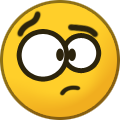





.thumb.jpg.8761b3d9b3da119b9e6d1912f67275ad.jpg)
